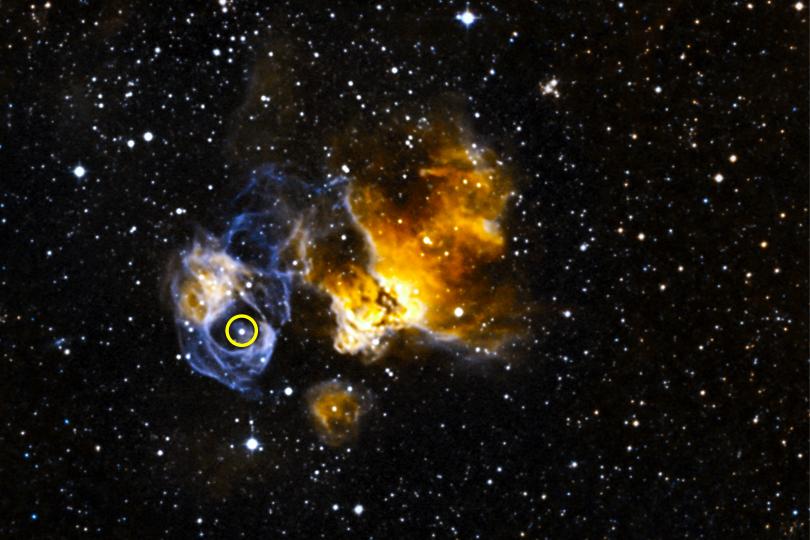NASA's Fermi Gamma-ray Space Telescope has found the first gamma-ray binary – the brightest one ever spotted – in another galaxy.
The dual-star system, dubbed LMC P3, contains a massive star and a crushed stellar core that interact to produce a cyclic flood of gamma rays, the highest-energy form of light, NASA said.
“Fermi has detected only five of these systems in our own galaxy, so finding one so luminous and distant is quite exciting,” said lead researcher Robin Corbet from NASA’s Goddard Space Flight Center in Greenbelt, Maryland.
Gamma-ray binaries are prized because the gamma-ray output changes significantly during each orbit and sometimes over longer time scales.
“This variation lets us study many of the emission processes common to other gamma-ray sources in unique detail,” Corbet added.
These rare systems contain either a neutron star or a black hole and radiate most of their energy in the form of gamma rays.
LMC P3 is the most luminous such system known in gamma rays, X-rays, radio waves and visible light, and it’s only the second one discovered with Fermi.
It lies within the expanding debris of a supernova explosion located in the Large Magellanic Cloud (LMC), a small nearby galaxy about 163,000 light-years away.
In 2012, scientists using NASA’s Chandra X-ray Observatory found a strong X-ray source within the supernova remnant and showed that it was orbiting a hot, young star many times the sun’s mass.
Corbet’s team discovered a 10.3-day cyclic change centred near one of several gamma-ray point sources recently identified in the LMC.
Prior to Fermi’s launch, gamma-ray binaries were expected to be more numerous than they have turned out to be.
“It is certainly a surprise to detect a gamma-ray binary in another galaxy before we find more of them in our own,” said Guillaume Dubus, a team member at the Institute of Planetology and Astrophysics of Grenoble in France.
A paper describing the discovery is forthcoming in The Astrophysical Journal.
(With agency inputs)

